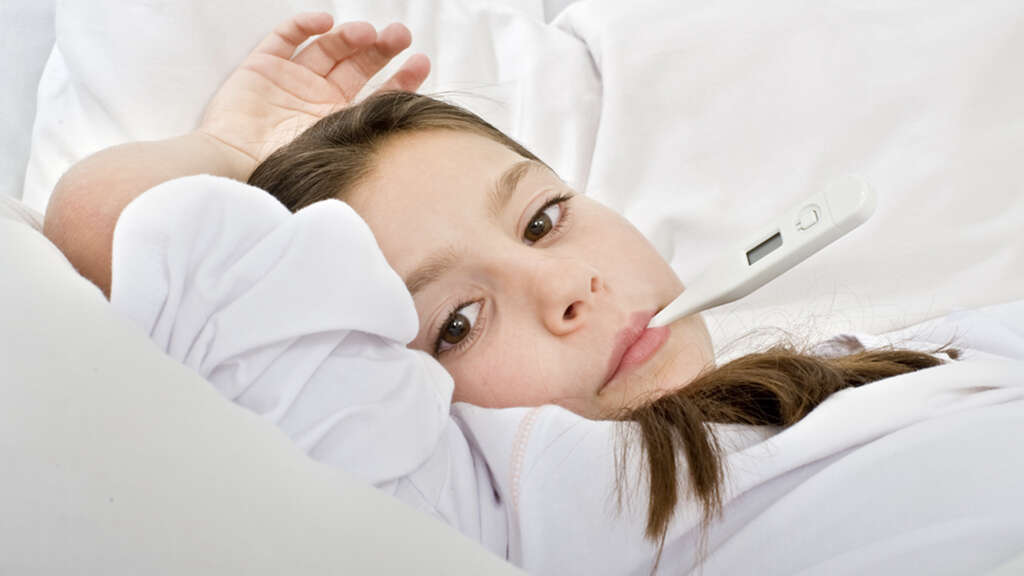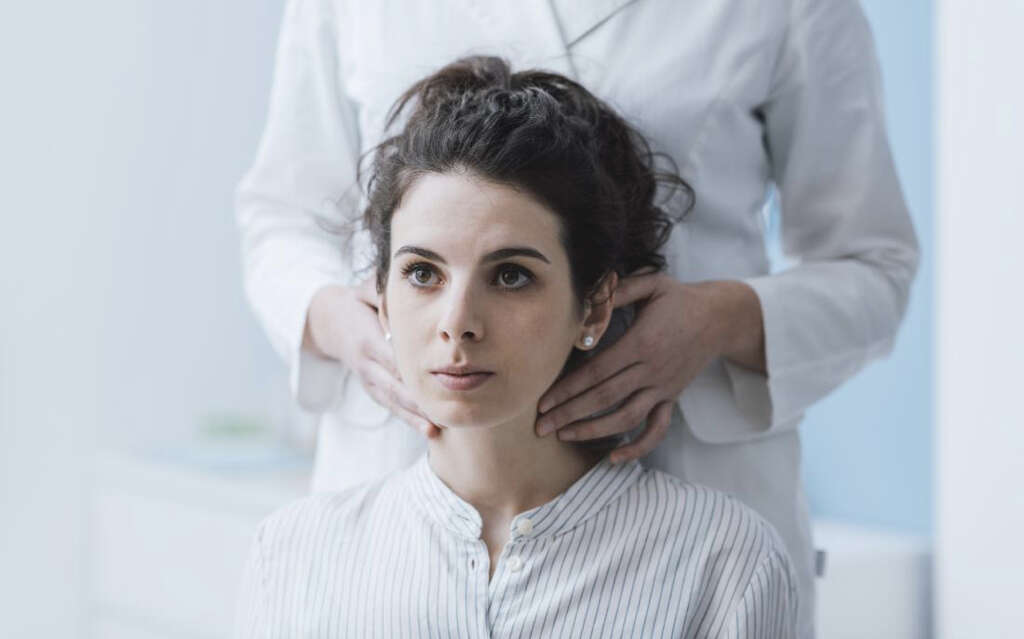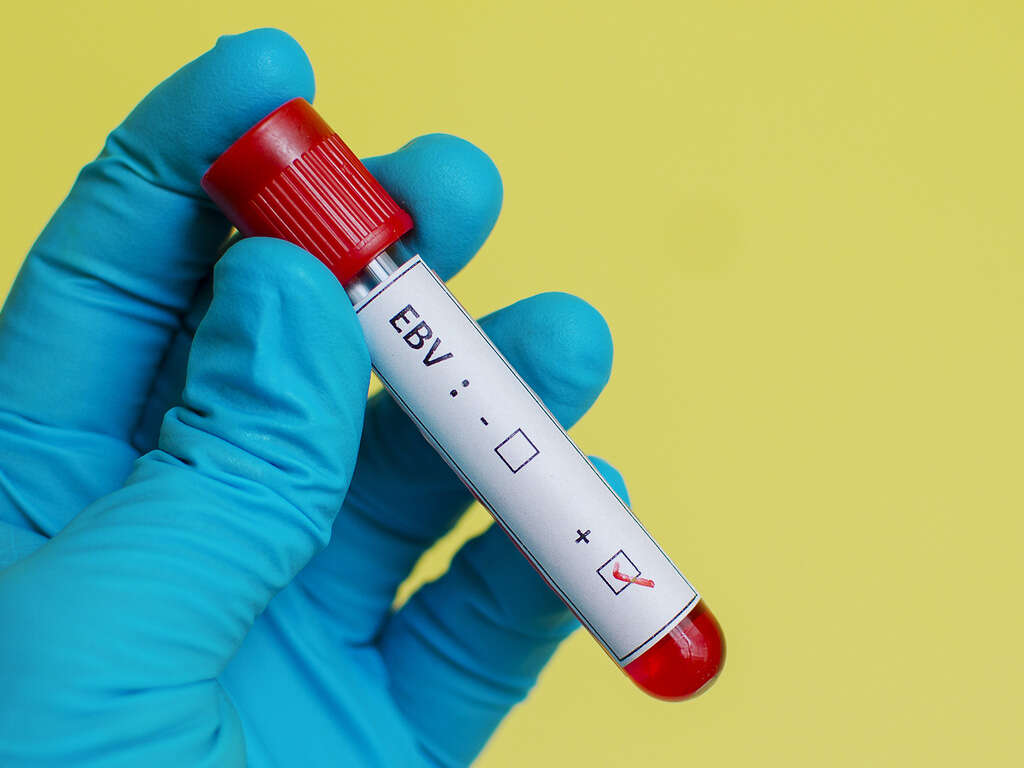10 Mononucleosis Symptoms
Mononucleosis is a viral infection with the Epstein-Barr virus, abbreviated as EBV and also called herpes virus 4. Other names for the infection include mono, infectious mononucleosis, glandular fever, and given that it is mainly transmitted through oropharyngeal secretions, the kissing disease.
According to the Center for Disease Control and Prevention (CDC), most people seroconvert at some point in their lives (develop specific antibodies to EBV that become detectable in blood). However, this does not necessarily mean they develop symptoms. Interestingly, in the US around half of the population seroconverts before age 5. The virus infects B lymphocytes, and these proliferate and circulate throughout the body (most importantly: spleen, liver and peripheral lymph nodes) activating several of the body’s defense mechanisms (cytokines, and T-cell response).
While the condition is more common in people aged 15 to 24 years, it can occur at any age. Below are the top 10 symptoms of mononucleosis.

Symptom #1: Fever
Fever is one of the initial symptoms of EBV infectious mononucleosis, but it is rarely the sole manifestation. It may reach 103-104°F but is usually less than 102°F. Persistent fever or reappearance after recovery should suggest an alternate diagnosis. The fever will usually peak in the afternoon or early evening. The fever can last for days to weeks depending on the ability of your immune system to fight against the infection. In the very young and the elderly, mono may manifest by fever and muscle pain only.
Before fever, you may get chills or rapid muscular contraction and relaxation. This is the way your body responds to changes in temperature to produce more heat.

Symptom #2: Sore Throat
Mononucleosis causes sore throat (pharyngitis) or even swollen tonsils (tonsillitis). This symptom constitutes a cardinal manifestation of EBV infection.
Your tonsils will be red and swollen and you’ll have difficulty in swallowing. After a while, white patches can appear on your tonsils (exudative tonsillitis) and resemble bacterial pharyngitis (streptococcal). However, nonexudative pharyngitis with or without tonsillar enlargement can also be common in these patients, and it may resemble viral pharyngitis. You may also develop a loss of appetite, or anorexia, due to the pain associated with the swollen tonsils and sore throat.

Symptom #3: Fatigue
If you or a loved one experience fever, swollen lymph nodes and feel tired and unable to get anything done for a long period of time (chronic fatigue), EBV could be the culprit. The disease is most common in the 15-24 age group and, therefore, it could be one of the causes (i.e. anemia, depression, hypothyroidism) why teenagers and young adults may experience periods of extreme tiredness.
Notice that most patients with mononucleosis don’t realize that they have the infection because the acute symptoms like fever and sore throat disappear after a while or might not be present in the first place. These are accompanied by fatigue, which may last for 6 months or longer.

Symptom #4: Headache
Headache has a wide range of causes. It is one of the so-called vague symptoms because they are nonspecific to any condition.
The headache may last for days to weeks and is usually associated with fever and general fatigue. Headaches, together with fever, general fatigue, and sore throat are some of the early symptoms of mononucleosis. Pay your doctor a visit for an early check if you have most of these initial symptoms to avoid further complications.

Symptom #5: Body and Muscle Pain
Another vague symptom of viral infections is body ache, specifically of joints (arthralgias) and muscles (myalgias). This symptom may occur in EBV infection but is less common than in other viral diseases. The pain starts slowly then increases over time. Muscle ache and arthralgias are associated with general fatigue, fever, sore throat, and other vague symptoms.
Since all these symptoms are nonspecific, it’s recommended that you go to a primary care center and get yourself checked. Through clinical examination and blood tests, the physician will be able to confirm whether you have mono or not. Your early checkup is important to prevent the spread of the disease to other people.

Symptom #6: Pain in the Abdomen
The spleen is one of the vital organs in the body when it comes to fighting infections. It is located in the upper left quadrant of the abdomen, just below the diaphragm. Spleen enlargement or splenomegaly is one of the most serious complications of mono and it happens in 50 percent of cases in adults. It is manifested by pain in the upper left part of the abdomen.
Splenomegaly may be detected on imaging or it could be a finding on physical examination. There are several infectious and non-infectious causes of splenomegaly, thus it should be thoroughly studied. Splenic rupture is a rare complication of splenomegaly. In this condition, you should not participate in any kind of contact sports or hobbies for 4 to 6 weeks.

Symptom #7: Skin Rash
About five percent of people with mononucleosis suffer from a red or pink skin rash. It occurs in the first few days and is usually mild, transient, and nonpruritic (does not itch), thus it can be easily missed by physicians and patients. While this is not a common symptom of mono, when it occurs, it can worsen if you take an antibiotic. Drug-induced rash is usually pruritic and prolonged.
Viral infections are not treated by antibiotics. However, many people think antibiotics can eradicate any kind of organism. And since the symptoms include sore throat, a lot of people think antibiotics are the solution. It is, however, necessary to note that Aminopenicillins (i.e. ampicillin, amoxicillin) are contraindicated in patients with mono infection.

Symptom #8: Swollen Lymph Nodes
Spleen and lymph nodes are parts of the body’s defense system. And because they are responsible for fighting infections, they get inflamed during their war with infections like mononucleosis. The body has lymph nodes in many areas of the body. The lymph nodes in the back of the neck, especially bilaterally, are normally affected. This is the reason why the disease is easily spread through saliva, such as while kissing.
When the infection spreads, other lymph nodes get affected, especially those in the armpit and groin. Swollen lymph nodes are a sign of your body fighting the infection, so help them by getting checked as soon as possible.

Symptom #9: Jaundice
Acute inflammation of the liver (hepatitis), can result in an abnormal enlargement of the organ (hepatomegaly). This occurs in 10% of adults with mononucleosis, and in 30% of infected elderly individuals. In most cases it can go undetected and resolve spontaneously. The mild to moderate hepatitis seen in EBV may manifest as pain in the upper right quadrant of the abdomen and/or, rarely, jaundice.
Jaundice is a clinical term that describes a yellowish tinge to the skin and the whites of the eye, and it is caused by a buildup of bilirubin in the blood (instead of the bile), a waste material produced by the liver. However, jaundice is not a specific sign of EBV infection. In liver enzyme tests, a mild elevation of serum transaminases is a constant finding in early infection. Clinical jaundice with high bilirubin levels (≥ 6.0 mg/dL] is only occasionally encountered.

Symptom #10: Anorexia
Anorexia is a medical condition where the patient experiences a lack or loss of appetite for food. In many acute inflammatory diseases, such as mononucleosis, systemic inflammation evokes an array of brain-mediated responses including fever, and anorexia. Both fever and anorexia are prostaglandin dependent.
Furthermore, patients may experience odynophagia (pain when swallowing) associated with tonsillitis and/or pharyngitis caused by the virus. This may also account for lack or decreased appetite in patients with mononucleosis.
Note that this symptom does not refer to the eating disorder, anorexia nervosa.









